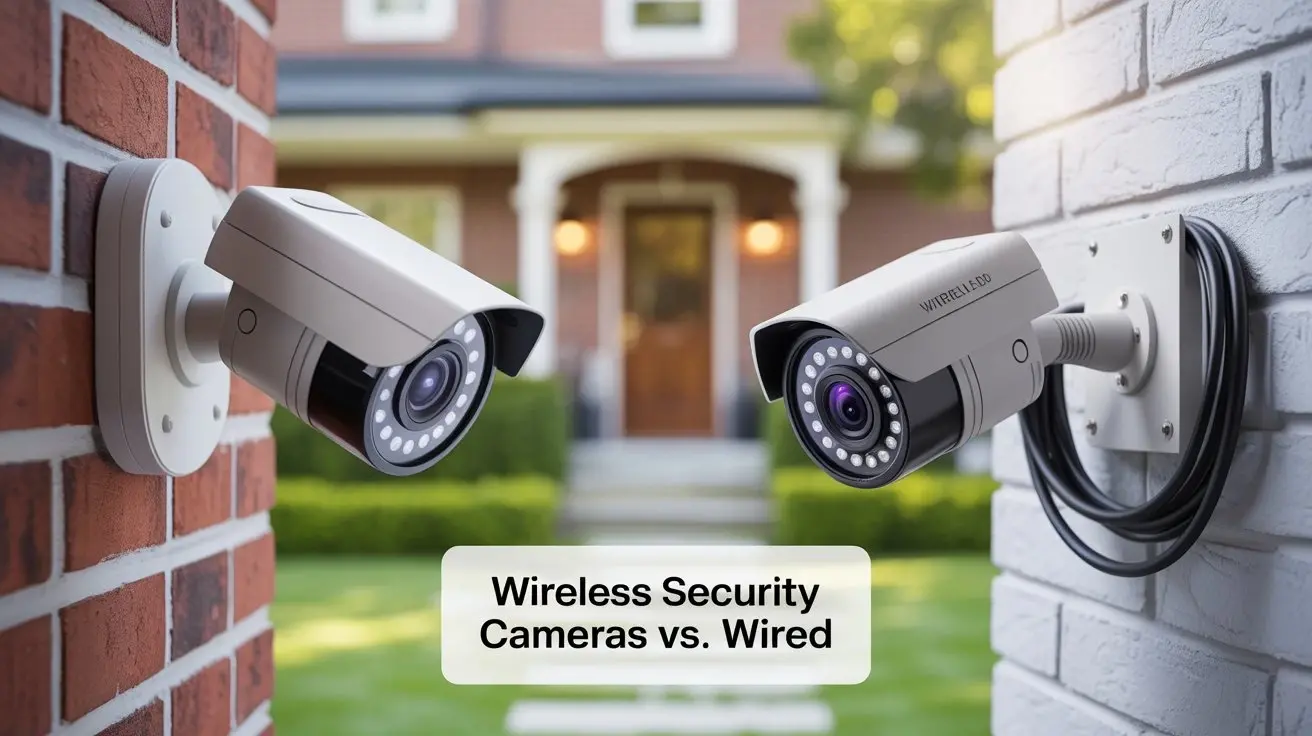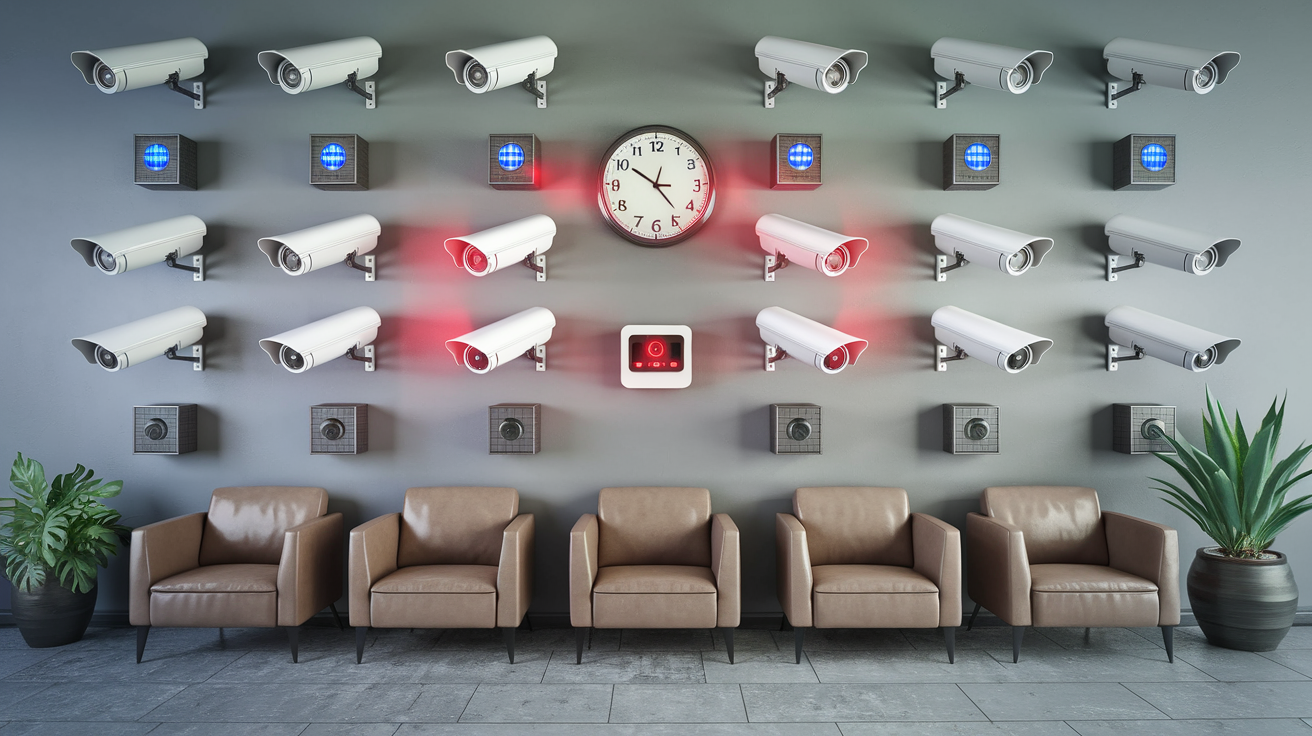In 2025, the security camera industry is experiencing a technological renaissance, driven by advancements in artificial intelligence (AI) and biometrics. Among the most significant trends is the rise of facial recognition features, which have transformed security cameras from passive recording devices into intelligent systems capable of identifying individuals in real time. This technology enhances security, streamlines access control, and provides personalized alerts, making it a cornerstone of modern surveillance for homes and businesses. As facial recognition becomes more accurate and accessible, it’s reshaping how we protect our spaces. This 1500-word guide explores the emergence of facial recognition in security cameras, key trends driving its adoption, top models for 2025, and the benefits and challenges of this transformative technology.
Understanding Facial Recognition in Security Cameras
Facial recognition technology uses AI to analyze facial features, such as the shape of the eyes, nose, and jawline, to create a unique digital "faceprint." Security cameras equipped with this feature compare captured faceprints against a stored database to identify individuals, distinguishing between familiar faces (e.g., family or employees) and strangers. The process involves face detection, feature extraction, and matching, powered by deep learning algorithms like convolutional neural networks. In 2025, improvements in 3D facial mapping, liveness detection, and edge computing have boosted accuracy to over 99% in optimal conditions, even in challenging scenarios like low light or partial obstructions.
Key Trends Driving Facial Recognition in Security Cameras
Several trends are fueling the widespread adoption of facial recognition in security cameras for 2025:
- Advanced AI Algorithms: Deep learning models improve recognition accuracy, handling diverse lighting, angles, and facial expressions with high precision.
- 3D Facial Mapping: Depth sensors create detailed 3D face models, enhancing security by preventing spoofing attempts using photos or videos.
- Liveness Detection: Cameras detect micro-expressions or infrared patterns to confirm a real person, countering deepfakes and fraud.
- Edge Computing: On-device processing reduces latency, enhances privacy, and minimizes cloud dependency for faster recognition.
- Multi-Modal Biometrics: Combining facial recognition with voice or behavioral analysis creates robust, multi-layered security systems.
- Flexible Storage Options: Cameras offer cloud storage for remote access or local storage (microSD or hubs) to address privacy concerns.
- Smart Home Integration: Compatibility with platforms like Google Home, Alexa, and IFTTT enables automation, such as unlocking doors for recognized individuals.
- Privacy Enhancements: Features like dynamic blurring, encrypted databases, and opt-in consent address privacy concerns and regulatory compliance.
Key Trend: Edge computing and 3D facial mapping are making facial recognition faster and more secure, driving its adoption in consumer security cameras.
Benefits of Facial Recognition in Security Cameras
Facial recognition offers compelling advantages for homeowners and businesses:
- Improved Security: Identifying authorized individuals and detecting strangers in real time enhances safety for homes, offices, and public spaces.
- Fewer False Alarms: By distinguishing familiar faces from unknowns, cameras reduce unnecessary alerts triggered by routine activity.
- Convenience: Automated identification eliminates the need for keys or PINs, streamlining access control and visitor management.
- Personalized Alerts: Users receive tailored notifications, such as “Child arrived home” or “Unknown person detected,” improving monitoring efficiency.
- Scalability: Facial recognition systems integrate with larger security networks, supporting expansion from single cameras to enterprise solutions.
Challenges and Privacy Considerations
While facial recognition is powerful, it presents challenges that users must address:
- Privacy Risks: Storing biometric data raises concerns about hacking or misuse, requiring strong encryption and compliance with laws like GDPR or CCPA.
- Accuracy Limitations: Low light, facial obstructions (e.g., masks), or algorithmic biases can reduce performance, though 3D mapping mitigates these issues.
- Ethical Concerns: Potential misuse in surveillance or biased profiling raises ethical questions, necessitating transparent policies.
- Cost: Advanced facial recognition often requires subscriptions ($2–$20/month) or premium hardware, increasing expenses.
Caution: Ensure compliance with local regulations on biometric data use, as some regions restrict facial recognition in security cameras.
Top Facial Recognition Security Cameras for 2025
Here are five leading security cameras with facial recognition features for 2025, suitable for home and business applications:
1. Google Nest Cam (Indoor/Outdoor, Battery)
The Google Nest Cam offers 1080p HDR video, a 135-degree field of view, and facial recognition with “Familiar Face Alerts” via a Nest Aware subscription ($8/month). It identifies known faces and integrates with Google Home and Alexa, offering three hours of free cloud storage and color night vision.
Pros: Accurate facial recognition, free basic storage, seamless Google Home integration, flexible power options.
Cons: Subscription required for facial recognition, moderate resolution.
2. Eufy Indoor Cam S350
The Eufy Indoor Cam S350 features 4K UHD video with dual cameras, a 130-degree field of view, and facial recognition via the BionicMind AI hub. It supports local storage, eliminating subscriptions, and offers intelligent tracking for faces and objects. It integrates with Alexa and Google Assistant.
Pros: 4K resolution, no subscription, robust AI features, local storage.
Cons: Requires hub, no HomeKit support.
3. Arlo Ultra 2
The Arlo Ultra 2 delivers 4K HDR video, a 180-degree field of view, and facial recognition with an Arlo Secure subscription ($8/month). It includes a spotlight, two-way audio, and compatibility with Alexa, Google Home, and IFTTT. Its wireless design simplifies installation.
Pros: High-quality video, wide field of view, robust integrations, flexible installation.
Cons: Subscription required, premium price.
4. Lorex 4K Outdoor Camera
The Lorex 4K Outdoor Camera offers 4K video, a 140-degree field of view, and AI-driven person detection with local storage via a DVR. Its color night vision and IP67 weather resistance make it ideal for outdoor use, though facial recognition requires specific configurations.
Pros: High-resolution video, local storage, durable design, color night vision.
Cons: Limited smart home compatibility, complex setup for facial recognition.
5. Wyze Cam v3
The Wyze Cam v3 is a budget-friendly option ($35) with 1080p video, a 130-degree field of view, and person detection via a Wyze Cam Plus subscription ($2/month). It offers color night vision, IP65 weather resistance, and Alexa/Google Home integration.
Pros: Affordable, weather-resistant, low-cost subscription, color night vision.
Cons: Lower resolution, limited facial recognition capabilities.
Comparison Table
| Model | Resolution | Field of View | Power | Storage | Smart Home | Subscription |
|---|---|---|---|---|---|---|
| Google Nest Cam | 1080p | 135° | Wired/Wireless | Cloud (3 hours free) | Google, Alexa | $8/month |
| Eufy Indoor Cam S350 | 4K | 130° | Wired | Local | Alexa, Google | None |
| Arlo Ultra 2 | 4K | 180° | Wired/Wireless | Cloud | Alexa, Google, IFTTT | $8/month |
| Lorex 4K Outdoor | 4K | 140° | Wired | Local | Limited | None |
| Wyze Cam v3 | 1080p | 130° | Wired | Cloud/Local | Alexa, Google | $2/month |
Choosing the Best Facial Recognition Camera
The ideal facial recognition camera depends on your specific needs:
- Best Overall: Google Nest Cam
Its reliable facial recognition, free basic storage, and Google Home integration make it suitable for most users, despite requiring a subscription for full features. - Best for No Subscriptions: Eufy Indoor Cam S350
With 4K resolution and local storage, it’s perfect for avoiding recurring costs while leveraging advanced facial recognition. - Best for Outdoor Use: Lorex 4K Outdoor Camera
Its high-resolution video and local storage suit rugged environments, though smart home support is limited. - Best for Wide Coverage: Arlo Ultra 2
The 180-degree field of view and 4K video are ideal for large areas, with robust integrations. - Best Budget: Wyze Cam v3
Affordable with decent person detection, it’s great for cost-conscious users needing basic features.
Conclusion
The rise of facial recognition in security cameras is a defining trend for 2025, offering enhanced security, convenience, and automation. Driven by advancements in AI, 3D mapping, liveness detection, and edge computing, cameras like the Google Nest Cam, Eufy Indoor Cam S350, Arlo Ultra 2, Lorex 4K Outdoor, and Wyze Cam v3 are leading the market. While benefits like reduced false alarms and smart home integration are transformative, privacy concerns and subscription costs require careful consideration. By evaluating resolution, storage, and compatibility, users can select a facial recognition camera that ensures safety and aligns with their needs for a secure 2025.






